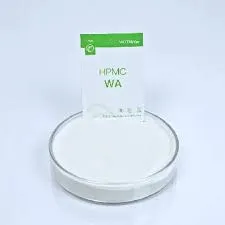
Dec . 20, 2024 10:38 Back to list
Exploring HPMC Grades for Enhanced Pharmaceutical and Food Applications
Understanding HPMC Grades A Comprehensive Guide
Hydroxypropyl Methylcellulose (HPMC) is a versatile cellulose-derived polymer widely used in various industries, including pharmaceuticals, food, cosmetics, and construction. It is particularly favored for its water-solubility and film-forming properties. As diverse as its applications are, HPMC comes in various grades, each tailored to specific requirements. This article aims to delve into HPMC grades, their characteristics, and their uses to provide clarity to manufacturers and consumers alike.
What is HPMC?
HPMC is a non-ionic cellulose ether synthesized by chemically modifying cellulose, a naturally occurring polymer found in the cell walls of plants. The structural modifications it undergoes—hydroxypropyl and methyl substitution—impart unique properties, making it suitable for different applications. Its ability to form thin films, thickening agents, emulsifiers, and stabilizers has made HPMC a staple in many formulations.
Classification of HPMC Grades
HPMC grades are typically classified based on the viscosity, degree of substitution, and molecular weight. The most common classification parameters include
1. Viscosity HPMC products come in various viscosities, which are determined by the concentration of the solution. For instance, lower viscosity grades (such as HPMC 3,000) are suitable for products requiring a smoother texture, like in sauces and dressings, while higher viscosity grades (like HPMC 100,000) are used to provide stability and thickness in applications such as pharmaceuticals and personal care products.
2. Degree of Substitution This refers to the average number of hydroxyl groups on the cellulose molecule that have been substituted with hydroxypropyl and methyl groups. The degree of substitution impacts solubility and swelling properties. HPMC grades with higher methyl substitution generally exhibit good water retention and thickening capabilities, making them ideal for construction and adhesive products.
3. Molecular Weight This characteristic is crucial as it influences the performance of HPMC in various formulations. A high molecular weight HPMC typically provides enhanced viscosity and superior film-forming properties, whereas low molecular weight HPMC products may offer quicker solubility and clarity in solutions.
Common HPMC Grades and Their Uses
- HPMC 15,000 A medium viscosity grade widely used in construction applications, such as tile adhesives and cement-based products. Its high adhesive properties and water retention capability ensure durability.
hpmc grades

- HPMC 50,000 This higher viscosity grade is ideal for pharmaceutical applications, such as controlled-release formulations, due to its excellent gel-forming capabilities.
- HPMC 3,000 Frequently found in food products, this low viscosity grade aids in improving texture and mouthfeel without adding excessive thickness, making it perfect for sauces and dressings.
- HPMC K100M This grade is often used in the cosmetic industry due to its high viscosity and ability to stabilize emulsions, providing a smooth texture to creams and lotions.
Benefits of HPMC Grades
The diverse range of HPMC grades offers multiple benefits across different industries
- Versatility Its ability to adapt to various formulations enables manufacturers to create products tailored to specific consumer needs.
- Stability HPMC's film-forming and stabilizing properties contribute to the shelf-life and efficacy of products.
- Eco-Friendly As a plant-based polymer, HPMC is a more environmentally friendly alternative compared to synthetic polymers.
- Ease of Use HPMC can be easily incorporated into various formulations with minimal changes to existing processes.
Conclusion
Understanding HPMC grades is vital for manufacturers and consumers aiming to optimize product formulation and meet specific applications. The versatility and performance of HPMC make it an invaluable component across multiple industries. As the demand for eco-friendly, efficient, and effective products continues to rise, HPMC is likely to remain a cornerstone in innovation and formulation improvements. Recognizing the unique properties and applications of each grade will enable better product development and enhanced consumer satisfaction.
-
Versatile Hpmc Uses in Different Industries
NewsJun.19,2025
-
Redispersible Powder's Role in Enhancing Durability of Construction Products
NewsJun.19,2025
-
Hydroxyethyl Cellulose Applications Driving Green Industrial Processes
NewsJun.19,2025
-
Exploring Different Redispersible Polymer Powder
NewsJun.19,2025
-
Choosing the Right Mortar Bonding Agent
NewsJun.19,2025
-
Applications and Significance of China Hpmc in Modern Industries
NewsJun.19,2025







